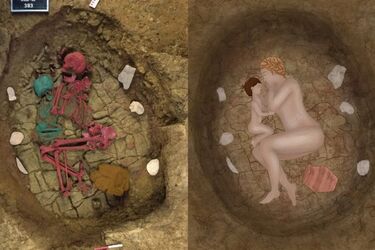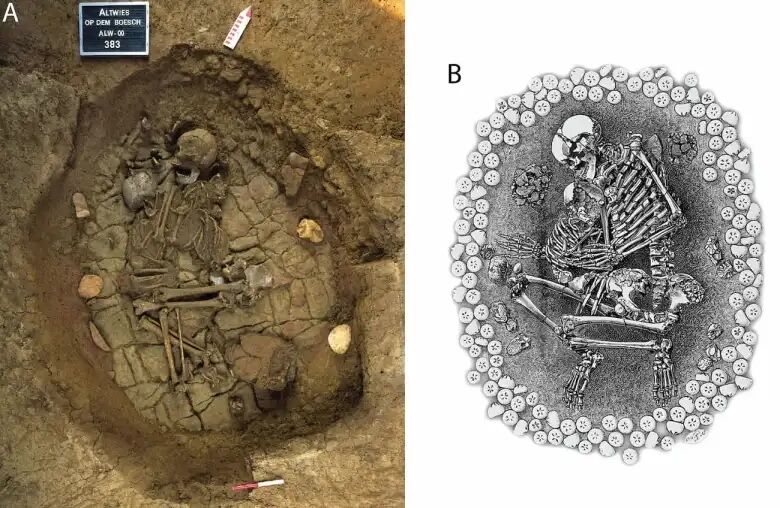More than 100 eerie Bronze Age "family tombs" found in Europe: photos

Researchers from the Johannes Gutenberg University of Mainz and other European institutions have found that the practice of burying an adult holding or embracing a child was widespread in Western Eurasia around 3000-2000 BC.
The research team re-examined two remarkably similar double burial sites from the period. One was discovered in 2000 during construction in Altwies, Luxembourg, and contained the skeletons of a woman and a 3-year-old boy buried facing each other, with the woman holding the boy's head in her hand, labrujulaverde writes.
Another site was discovered in 1887 in Dunstable Downs, England, more than 500 kilometers away. An interdisciplinary analysis involving archaeology, anthropology, and ancient DNA techniques was conducted on four groups of human remains to search for cultural and genetic links between these earliest humans.

DNA analysis has yielded surprising results. It was found that the people from Luxembourg were biological mother and son, according to the burial site. However, the remains from England belonged to a young woman buried with a 6-year-old girl, who were identified as paternal aunt and niece, not mother and daughter as one might expect.
This suggests that kinship and hereditary descent may have been traced through the male line in some Bell Beeker communities. Additional evidence came from the strict rules of orientation that were followed in graves depending on the sex of the deceased. In Luxembourg, a boy's grave was oriented toward the male gender, not the mother buried next to him.
Combined with more than 100 other similar Bronze Age burial sites found across Eurasia, some broader patterns began to emerge. It turned out that this practice of burying an adult holding or embracing a child was widespread between 3000-2000 BC. However, the meaning and reasons for this remain unknown.
If you want to get the latest news about the war and events in Ukraine, subscribe to our Telegram channel!
